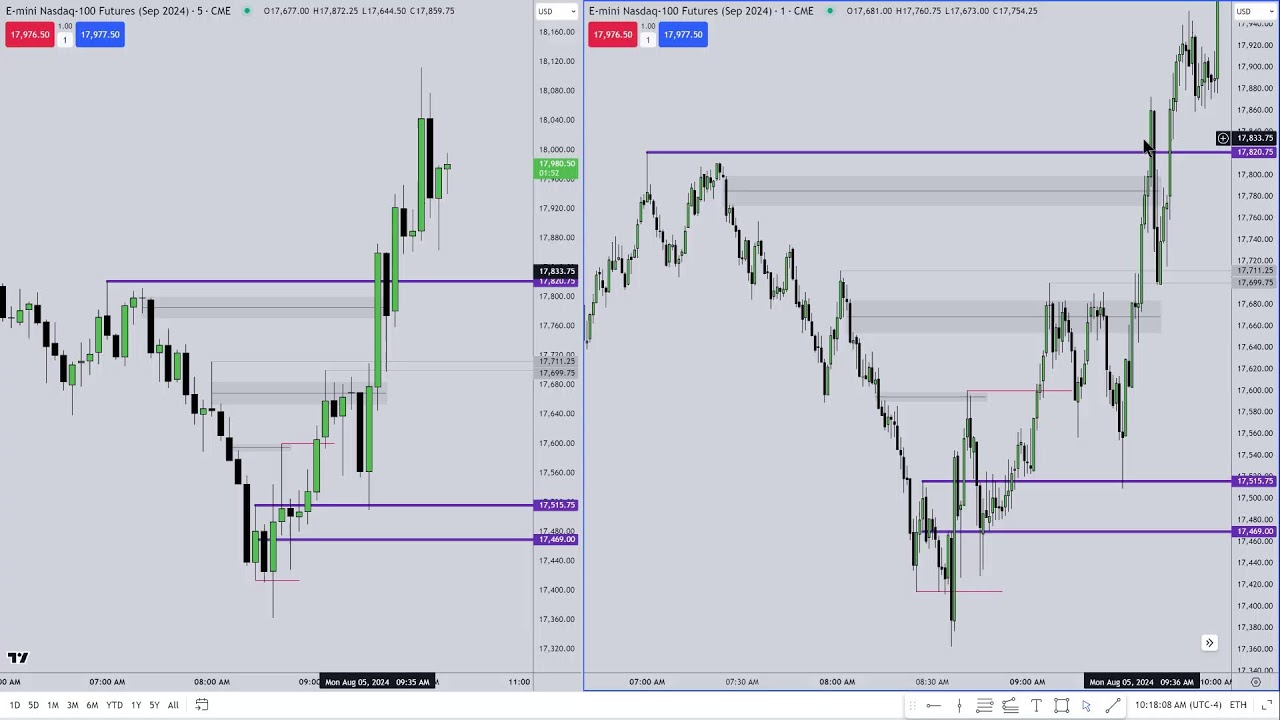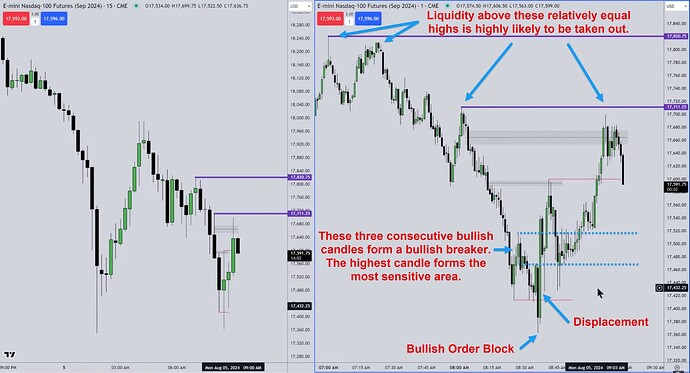Notes
- Patience is essential in trading. Michael notes that traders often fail because they expect constant action, leading them to make poor decisions.
- Trading is not about becoming popular or trying to impress others. The goal is to make money and be consistent in our approach.
- Sometimes, a trade opportunity will pass, and that’s okay. It’s better to miss a move than to force a bad one. Quality over quantity.
- The more complex a strategy gets, the less effective it becomes.
- Michael advises novice traders to focus on levels and inefficiencies (FVG, IFVG, BPR,…) on the 15-minute, 5-minute, and 1-minute charts. According to him, these time frames are everything a trader needs.
- Liquidity above relatively Equal Highs (EQH) is highly likely to be removed if the second high is lower than the first high.
- Liquidity below relatively Equal Lows (EQL) is highly likely to be removed if the second low is higher than the first low.
- Important periods to monitor:
- 7:00 to 7:30 a.m. - Pre-Market Range
- 7:30 to 8:00 a.m. - Opening Range
- 8:00 to 8:30 a.m. - Pre-Market Range
- 8:30 to 9:00 a.m. - Opening Range
- 9:00 to 9:30 a.m. - Pre-Market Range
- 9:30 to 10:00 a.m. - Opening Range
- The place where EQH or EQL is created determines the direction and target of our trade.
- If the price forms EQH and EQL, we have to wait until one side is taken out and then trade in the direction of the remaining liquidity.
- Michael recommends starting to look for EQH and EQL after 7:00 a.m., using the 15-minute, 5-minute, and 1-minute charts.
- Retail traders consider relatively equal highs and lows as resistance and support levels.
NQ - Bullish Breaker And Relatively Equal Highs And Lows
Next lesson: 2024 ICT Mentorship - Lecture 2: August 6

